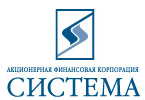|
|
|
 |
Virtual Tours round the Russian Museum The Rossi Wing |
     |
The Russian Museum
»
The Rossi Wing
»
Room 8
Room 8Folk Toys, Embroidery and Lace of the 19th – Early 20th Centuries Room VIII presents folk toys, embroidery and lace from the nineteenth and early twentieth centuries. Folk toys were made from such diverse materials as rags, straw and pine cones. The most popular media, however, were wood and clay. There were both small centres of this craft, known only to the local population, and large toy home crafts famous all over Russia. The first type is presented by many clay toy centres in Ryazan, Tambov, Penza and Kursk Provinces. They produced small female figures and images of riders, horses and birds, which used to personify natural forces in ancient times. Many toys were whistles. Major home crafts are represented by Dymkovo in Vyatka, Sergiev Posad and the village of Bogorodskoe near Moscow. The Dymkovo toy was known in the early nineteenth century in connection with the local annual svistoplyaska or penny-whistle festival, held on the fourth Saturday after Easter on the high banks of the River Vyatka. They were made from local red clay in a specified order of devices for each particular character. After drying and baking, a chalk ground diluted in milk was added and coloured with paints mixed with egg yolk. The toys of Sergiev Posad are particularly distinguished for their high mastery and traditions of realism and lifelikeness. Elegant ladies and dandy-like hussars were particularly popular. Splinters from large logs were used for miniature figurines depicting nannies, wet nurses and peasant women. Multifigure sets were also made – soldiers, musicians and monks – which were then arranged in diverse compositions. Another centre of the wooden toy was situated not far from Sergiev Posad in the village of Bogorodskoe. Unlike coloured toys from Sergiev Posad, Bogorodskoe toys were purely wooden and of natural colour and texture. The main heroes of the Bogorodskoe works were staid and handsome peasant men and women, depicted eating or engaged in housework. Embroidery was the most widespread type of folk art. In the nineteenth century, it was noted for its wide variety of local peculiarities in ornamentation, technique of execution, colour combinations and stylistic trends. North Russian embroidery has largely retained numerous compositions dating back to olden times. Geometric ornamentation, images of the Goddess of the Earth and the Tree of Life, riders, horses and birds embroidered with double-sided stitching in red threads on white linen echo the ancient mythology. Golden embroidery entered peasant art from the heritage of Old Russia and in the nineteenth and early twentieth centuries developed in a number of localities, including Nizhny Novgorod Province. There, in the town of Gorodets, they made gold embroidered headscarves‚ – an invariable attribute of the local peasant dress. The nineteenth and early twentieth centuries were the heyday of Russian lacework. There were many local centres of lace production, famed for their peculiarities in ornamental design, material, ways of lace-making, nature of lace and its application in concrete objects. The most popular centres of lace production were Vologda and regions of Vologda Province, the town of Yelets in Oryol Province, Kukarka settlement in Vyatka Province and the Mikhailovsky district of Ryazan Province. The samples of their produce are exhibited in showcases in Room VIII. |
The Project “The Russian Museum: the Virtual Branch” |